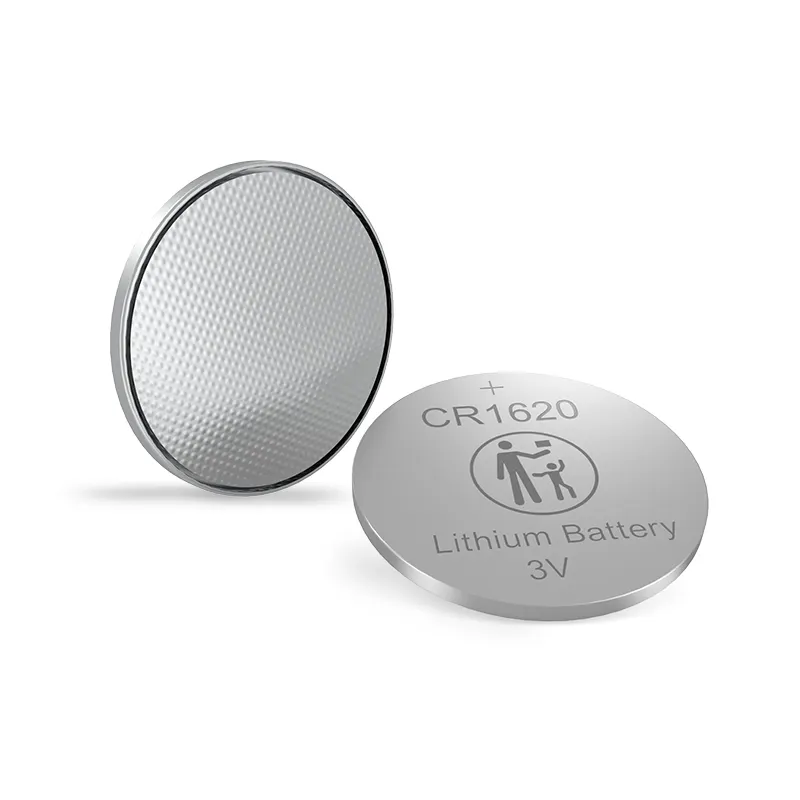Ժամանակակից մարտկոցային տեխնոլոգիաների ուժի հասկացում
Կոճակային բջիջներ փոխարկել են մեր փոքր էլեկտրոնային սարքերի էներգամատակարարման ձևը՝ առաջարկելով հուսալի և հարմարավետ լուծում: Այս կոմպակտ էներգային աղբյուրները, չնայած իրենց փոքր չափսերին, պարունակում են մեծ քանակությամբ էներգիա և դարձել են մեր առօրյա կյանքի անբաժանելի մասը: Դեռևս ժամացույցներից և հաշվիչներից մինչև բանալիների կոճակներ և բժշկական սարքեր՝ լրացուցիչ մարտկոցները շարունակում են ցուցադրել իրենց բազմակողմանիությունն ու կարևորությունը ժամանակակից էլեկտրոնիկայում:
Ծանրացման էլեմենտների տեխնոլոգիայի հիմնարար հատկություններ
Կոմպակտ դիզայն և տարածքի эффեկտիվություն
Ըմբռունց մարտկոցների ամենացուցադրական հատկությունը տարածության արդյունավետ նախագծումն է: Այս փոքրիկ էներգային աղբյուրները սովորաբար մի քանի միլիմետր են բարձրությամբ և տրամագծով, ինչը դրանք դարձնում է իդեալական փոքր էլեկտրոնային սարքերում օգտագործման համար: Ըմբռունց մարտկոցների հարթ, շրջանաձև ձևը թույլ է տալիս արտադրողներին ստեղծել ավելի նուրբ և կոմպակտ ապրանքներ առանց հզորության մատակարարման կամ աշխատանքի վրա բացասաբար ազդելու:
Տարածության այս արդյունավետ օգտագործումը հնարավորություն է տվել ավելի բարդ հագուստային տեխնոլոգիաների և մինիատյուր էլեկտրոնային սարքերի զարգացման: Ըմբռունց մարտկոցները կարևոր դեր են խաղացել ժամանակակից համարյա ժամացույցների, ֆիտնես թրեքերների և բժշկական հսկողության սարքերի զարգացման մեջ, որտեղ տարածական սահմանափակումները նախագծման հիմնական համարձակումներից մեկն են:
Երկարաժամկետ էներգամատակարարում
Չնայած իրենց փոքր չափին, սեղմակները ստեղծված են, որպեսզի երկար ժամանակ ապահովեն հուսալի էներգիա: Այդ մարտկոցների քիմիական բաղադրությունը և կառուցվածքը թույլ են տալիս դրանց պահպանել կայուն լարման ելք ընթանց իրենց կյանքի ընթացքում, ապահովելով սարքի համապարփակ աշխատանքը: Շատ սեղմակներ կարող են մի քանի տարի էլ ապահովել սարքերի աշխատանքը, ինչը դրանք հատկապես հարմար է դարձնում այն սարքերի համար, որոնք պահանջում են երկարաժամկետ, սպասարկման ազատ գործողություն:
Սեղմակների երկարակյացությունը հատկապես արժեքավոր է կրիտիկական կիրառություններում, ինչպես օրինակ բժշկական սարքերը և անվտանգության համակարգերը, որտեղ մարտկոցի փոխարինումը կարող է անհարմար լինել կամ էլ խոչընդոտել էական գործողություններին: Այս երկարացված կյանքի տևողությունը նաև նպաստում է էլեկտրոնային թափոնների նվազեցմանը և ցածր սպասարկման ծախսերին համար օգտագործողների համար:
Գործնական կիրառություններ ժամանակակից սարքերում
Անձնական էլեկտրոնիկա և հագումային սարքեր
Ընդհանուր ընդունման շնորհիվ սեղմակները օգտագործվում են անձնական էլեկտրոնիկայում, ինչը հնարավորություն է տվել ստեղծել ավելի բարդ կարողացող նոր կրիչներ: Թվային ժամացույցներից և հաշվիչներից մինչև Bluetooth ականջակալներ և ֆիտնես թրեքերներ, այս փոքր էներգիայի աղբյուրները ապահովում են հուսալի էներգիա ամենօրյա սարքերի համար: Սեղմակների կայուն էներգատույն արտադրությունը ապահովում է համապատասխան արդյունավետություն այս կիրառություններում, որն ուղղված է բարելավելու օգտվողի փորձը և սարքի հուսալիությունը:
Աճող հագուստային տեխնոլոգիաների շուկայում սեղմակները դարձել են հատկապես կարևոր: Նրանց թեթև բնույթը և փոքր չափը դրանք դարձնում է իդեալական սարքերի համար, որոնք պետք է հարմար լինեն կրել, միևնույն ժամանակ ապահովելով կայուն արդյունավետություն: Դա բերել է առողջապահության վերահսկման սարքերի, հեռացված կրող տեխնոլոգիաների և այլ նորամուծությունների մեջ, որոնք հաջողությամբ ինտեգրվում են մեր ամենօրյա կյանքում:
Բժշկական և առողջապահող սարքեր
Բժշկական ոլորտում սեղմակները սնուցում են կրիտիկական սարքերի մի շարք, ականջի ամրակներից սկսած մինչև գլյուկոզի մոնիթորները: Այդ մարտկոցների հուսալիությունը և երկար կյանքը դրանք դարձնում են իդեալական բժշկական կիրառությունների համար, որտեղ համապատասխան աշխատանքը կարևոր է: Սեղմակների փոքր չափը թույլ է տալիս ստեղծել աննկատ և հարմարավետ բժշկական սարքեր, որոնք հիվանդները կարող են կրել կամ օգտագործել նվազագույն անհարմարությամբ:
Բժշկական սարքերի արտադրողները հատկապես գնահատում են սեղմակների կանխելի լիցքի կորստի հատկությունները, որոնք օգնում են ապահովել զգայուն հսկողության սարքերի ճշգրիտ աշխատանքը: Այդ մարտկոցների երկար պահման ժամկետը նաև դրանք հարմար է դարձնում արտակարգ իրավիճակների բժշկական սարքերի համար, որոնք ցանկալի է միշտ պատրաստ լինեն օգտագործման համար:

Բնավարչական և աمنական դիտարկումներ
Բնապահպան էներգետիկ լուծումներ
Ժամանակակից սովորական մատակները նախագծված են հաշվի առնելով շրջակա միջավայրի հարցերը: Շատ արտադրողներ այժմ արտադրում են սնդիկազուրկ տարբերակներ, որոնք հասցնում են պատմական անհնազանդությունները մատակներում թունավոր նյութերի վերաբերյալ: Սովորական մատակների երկար ծառայության ժամկետը նաև նպաստում է կայունությանը՝ նվազեցնելով մատակների փոխարկման հաճախադեպությունը և, հետևաբար, էլեկտրոնային թափոնների քանակը:
Սովորական մատակների փոքր չափերը նշանակում են, որ դրանց արտադրության համար անհրաժեշտ է ավելի քիչ հումք, քան ավելի մեծ մատակների դեպքում: Բացի այդ, այժմ շատ սովորական մատակներ վերամշակվում են, և արտադրողները ավելի շատ են ներդնում վերադարձման ծրագրեր՝ ապահովելու համար վատացած մատակների ճիշտ տարանցումն ու վերամշակումը:
Անվտանգության հնարավորություններ և ստանդարտներ
Սովորական մատակները ներառում են տարբեր անվտանգության հնարավորություններ՝ վթարները կանխելու և հուսալի գործարկումն ապահովելու համար: Ժամանակակից դիզայնները ներառում են կառուցվածքային տարրեր, որոնք նվազագույնի են հասցնում արտահոսքի և կարճ միացումների վտանգը: Արտադրողները նաև իրականացնում են խիստ որակի վերահսկողության միջոցառումներ՝ ապահովելու համար իրենց ապրանքատեսակների համապատասխան աշխատանքը և անվտանգությունը:
Կոճակային մարտկոցների արտադրությունն ու փորձարկումը կարգավորվում են միջազգային անվտանգության ստանդարտներով, որոնք ապահովում են անվտանգության և արդյունավետության խիստ պահանջների կատարումը: Այդ ստանդարտները վերաբերում են տարբեր կողմերին՝ քիմիական բաղադրությունից մինչև ֆիզիկական կառուցվածքը, որպեսզի սպառողներին տրամադրվի իրենց մարտկոցային սարքերի անվտանգության և հուսալիության վերաբերյալ վստահություն:
Ապագայի միտումներ և նորարարություններ
Ընդհանուր տեղեկություն և տեխնոլոգիա
Այդ կոճակ Բջջ արդյունաբերությունը շարունակում է նորամուծություններ իրականացնել, իսկ հետազոտողները մշակում են նոր նյութեր և տեխնոլոգիաներ՝ արդյունավետությունն ու կայունությունը բարելավելու համար: Վերջին ձեռքբերումներից են նոր էլեկտրոդային նյութերի կիրառումը, որոնք մեծացնում են էներգիայի խտությունը և բարելավում են լիցքի բնութագրերը: Այդ մշակումները խորապես երկարացնելու են մարտկոցի կյանքը՝ պահպանելով փոքր ձևաչափը, որն այդքան բազմակի օգտագործելի է դարձնում կոճակային մարտկոցները:
Արտադրողական գործընթացներում արտահայտվող նոր տեխնոլոգիաները նաև հնարավորություն են տալիս արտադրել սովորական մատուցիչներ բարելավված հուսալիությամբ և համապատասխանությամբ: Այս բարելավումները նպաստում են սարքերի ավելի լավ աշխատանքին և սպառողների բավարարվածության մեծացմանը մատուցիչներով աշխատող ապրանքների նկատմամբ:
Ինտեգրացիա սմարտ տեխնոլոգիայի հետ
Քանի որ Առարկաների ինտերնետը (IoT) շարունակում է ընդլայնվել, սովորական մատուցիչները փոփոխվում են՝ համապատասխանելու համար խելացի սարքերի էներգամատակարարման պահանջներին: Արտադրողները մշակում են նոր տարբերակներ, որոնք նախատեսված են ցածր հզորությամբ անգութ կիրառումների համար, ապահովելով միացված սարքերի ավելի երկար աշխատանքային ժամանակ: Այս փոփոխվող տեխնոլոգիական պահանջներին հարմարվելը ապահովում է, որ սովորական մատուցիչները մնան համապատասխան միացված աշխարհում:
Սովորական մատուցիչների ինտեգրումը խելացի տեխնոլոգիայի հետ տանում է նաև մատուցիչի օգտագործման օպտիմալացման համակարգերին, որոնք տեղեկություն են տրամադրում մնացած մատուցիչի կյանքի մասին: Այս առաջընթացները օգնում են օգտվողներին ավելի լավ կառավարել իրենց սարքերը և մտածել մատուցիչի փոխարկման մասին:
Հաճախ տրվող հարցեր
Որքան է սովորաբար տևում սեղմակների կյանքը:
Կոճակային մարտկոցների կյանքի տևողությունը տարբեր է կախված տիպից և կիրառությունից, սակայն շատ դեպքերում այն տևում է 1-5 տարի սովորական օգտագործման դեպքում: Մարտկոցի կյանքի վրա ազդող գործոններից են սարքի էլեկտրաէներգիայի պահանջները, օգտագործման ձևը և շրջակա միջավայրի պայմանները:
Արդյոք կոճակային մարտկոցները բնապահպանորեն ընկալվում են:
Ժամանակակից կոճակային մարտկոցները ավելի շատ բնապահպանական են, քանի որ շատ արտադրողներ արտադրում են սնդիկազուրկ տարբերակներ և կազմակերպում են վերամշակման ծրագրեր: Նրանց երկար կյանքի տևողությունը և արդյունավետ դիզայնը նույնպես նպաստում են էլեկտրոնային թափոնների նվազեցմանը:
Կարելի է արդյոք կոճակային մարտկոցները փոխարինել վերալիցքավորվող համարժեքներով:
Չնայած կոճակային վերալիցքավորվող մարտկոցներ կան, սակայն դրանք սովորաբար ավելի ցածր լարում և տարողություն են ապահովում համեմատաբար վերալիցքավորվող չլինելու տարբերակների հետ: Վերալիցքավորվող և չվերալիցքավորվող տարբերակների ընտրությունը կախված է կիրառման հատուկ պահանջներից և սարքի դիզայնից:
Ի՞նչ անվտանգության միջոցառումներ պետք է ձեռնարկվեն կոճակային մարտկոցների դեպքում:
Լրացուցիչ մատուցման սեղանները պետք է տեղադրվեն հիմնական սեղանի հետ միասին և նույն ուղղությամբ, ինչպես նաև հիմնական սեղանի հետ միասին պետք է ամրակցվեն հատուկ ամրակցման միջոցներով, որոնք ներառված են հարթ տուփի մեջ:

